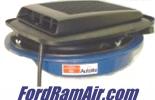The main differnce between the 2 is the lifters. A roller cam has lifters with needle bearing rollers that ride on the cam lobes. These lifters reduce friction and can accept a much more agressive lift rate. Roller lifters also do not rotate in their bore like flat tappet lifters. The lobes on a roller cam are ground streight or flat. Whare the lobes on a flat tappet cam are ground at a slight angle. This helps the lifter rotate in it's bore. And the reason for that is so it wears even on the bottom of the lifter making it last longer.
Alot of people think the performance gain in having a roller cam is in the reduction of friction. This is true, but there is more to it. As I said earlier, a roller cam has a much more agressive lift rate. This means the lifter and further more the valve opens quicker and closes quicker, in the same degrees of crank rotation as compared to a flat tappet cam. This means we can open the valve quick, hold it open, close it quick, and ignite the mixture. Are you starting to see the advantage? The valve is held open further, longer.
A flat tappet cam will open slower, stay open at it's peak lift faor a shorter time, and close slower.
-Flat tappet cams-
There is a differnce between "hydraulic" lifter cams and "solid lifter" cams. On a solid lifter cam there is a slight hump at about .005-.010 lift on both the opening and closing ramps. This is to help cushion the lifter and valvetrain parts.













 Mustangsandmore Forums
Mustangsandmore Forums

 Ford Racing
Ford Racing

 Can someone explain the diffrence?
Can someone explain the diffrence?


